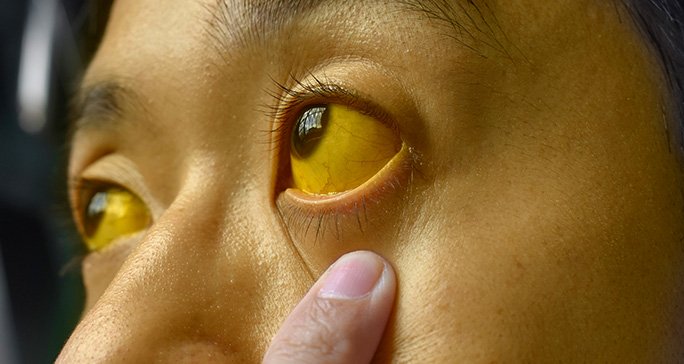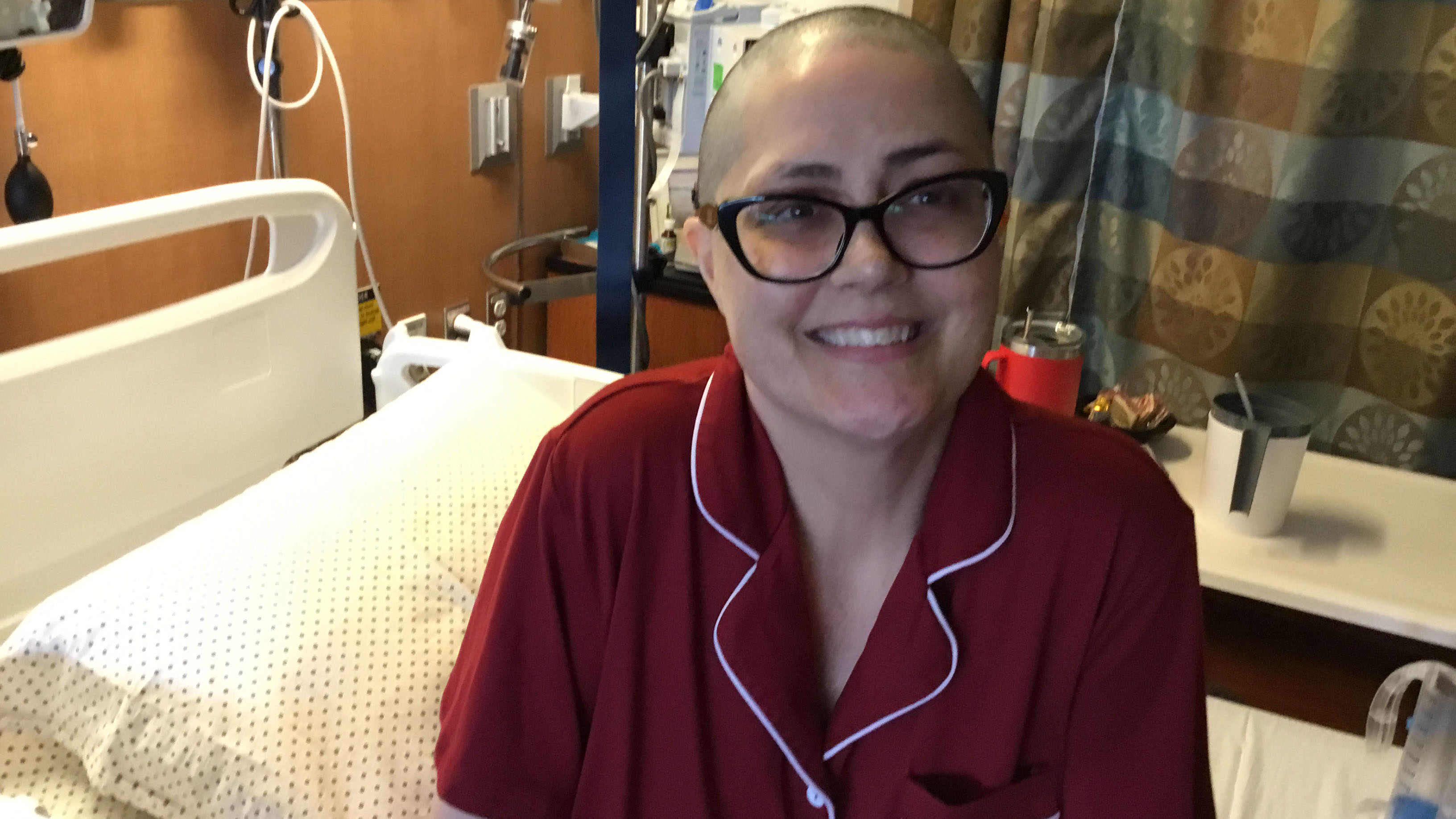- Diseases
- Acoustic Neuroma (14)
- Adrenal Gland Tumor (24)
- Anal Cancer (66)
- Anemia (2)
- Appendix Cancer (16)
- Bile Duct Cancer (26)
- Bladder Cancer (68)
- Brain Metastases (28)
- Brain Tumor (230)
- Breast Cancer (718)
- Breast Implant-Associated Anaplastic Large Cell Lymphoma (2)
- Cancer of Unknown Primary (4)
- Carcinoid Tumor (8)
- Cervical Cancer (154)
- Colon Cancer (164)
- Colorectal Cancer (110)
- Endocrine Tumor (4)
- Esophageal Cancer (42)
- Eye Cancer (36)
- Fallopian Tube Cancer (6)
- Germ Cell Tumor (4)
- Gestational Trophoblastic Disease (2)
- Head and Neck Cancer (6)
- Kidney Cancer (124)
- Leukemia (344)
- Liver Cancer (50)
- Lung Cancer (288)
- Lymphoma (284)
- Mesothelioma (14)
- Metastasis (30)
- Multiple Myeloma (98)
- Myelodysplastic Syndrome (60)
- Myeloproliferative Neoplasm (4)
- Neuroendocrine Tumors (16)
- Oral Cancer (100)
- Ovarian Cancer (170)
- Pancreatic Cancer (164)
- Parathyroid Disease (2)
- Penile Cancer (14)
- Pituitary Tumor (6)
- Prostate Cancer (144)
- Rectal Cancer (58)
- Renal Medullary Carcinoma (6)
- Salivary Gland Cancer (14)
- Sarcoma (236)
- Skin Cancer (296)
- Skull Base Tumors (56)
- Spinal Tumor (12)
- Stomach Cancer (60)
- Testicular Cancer (28)
- Throat Cancer (90)
- Thymoma (6)
- Thyroid Cancer (98)
- Tonsil Cancer (30)
- Uterine Cancer (78)
- Vaginal Cancer (14)
- Vulvar Cancer (18)
- Cancer Topic
- Adolescent and Young Adult Cancer Issues (20)
- Advance Care Planning (10)
- Biostatistics (2)
- Blood Donation (18)
- Bone Health (8)
- COVID-19 (362)
- Cancer Recurrence (120)
- Childhood Cancer Issues (120)
- Clinical Trials (626)
- Complementary Integrative Medicine (24)
- Cytogenetics (2)
- DNA Methylation (4)
- Diagnosis (230)
- Epigenetics (6)
- Fertility (64)
- Follow-up Guidelines (2)
- Health Disparities (14)
- Hereditary Cancer Syndromes (124)
- Immunology (18)
- Li-Fraumeni Syndrome (8)
- Mental Health (118)
- Molecular Diagnostics (8)
- Pain Management (62)
- Palliative Care (8)
- Pathology (10)
- Physical Therapy (18)
- Pregnancy (18)
- Prevention (896)
- Research (390)
- Second Opinion (74)
- Sexuality (16)
- Side Effects (604)
- Sleep Disorders (10)
- Stem Cell Transplantation Cellular Therapy (216)
- Support (404)
- Survivorship (322)
- Symptoms (184)
- Treatment (1774)
Navigating Burkitt lymphoma treatment while pregnant
4 minute read | Published March 23, 2021
Medically Reviewed | Last reviewed by an MD Anderson Cancer Center medical professional on March 23, 2021
Betsy Lucas was five months pregnant when a curious dime-sized lump arose on her neck.
Her family doctor thought it was likely an inflamed lymph node caused by a recent sinus infection. But a biopsy revealed Betsy had Burkitt lymphoma, a fast-growing type of non-Hodgkin lymphoma that occurs most often in young adults and children.
“I was stunned,” Betsy says. “The bump appeared out of nowhere, overnight.”
Pregnancy poses challenges during Burkitt lymphoma treatment
At her doctor’s urging, Betsy scheduled an appointment at MD Anderson, where she met with oncologist Sairah Ahmed, M.D.
“This is going to be difficult,” Ahmed said. “We need to act quickly.”
Had Betsy not been pregnant, Ahmed would have prescribed a chemotherapy regimen that included high doses of the cancer-killing drugs cyclophosphamide, vincristine, doxorubicin, dexamethasone, methotrexate and cytarabine. These are typically administered along with the monoclonal antibody drug rituximab, which trains a patient’s own immune system to attack and destroy cancer cells.
The drugs are divided into two groups – group A and group B – and delivered alternately, in an A-B-A-B-A-B pattern, six times over six months.
“This combination therapy is the gold standard treatment for Burkitt lymphoma,” Ahmed says. “It produces high cure rates.”
But Betsy couldn’t follow that formula. She was pregnant, and methotrexate – one of the drugs in the chemotherapy regimen – could cause severe birth defects, or even end her pregnancy.
Betsy and her husband, Joel, were determined to protect their baby. A prenatal ultrasound had revealed she was a girl. They named her Aurelia.
“She’s been special for a long time,” Betsy says. “Keeping her safe and healthy was our top priority.”
Finding the right Burkitt lymphoma treatment
Ahmed conferred with colleagues at MD Anderson and throughout the country to devise a treatment plan: Betsy would first receive three rounds of the Group A chemotherapy drugs, with each round spaced three weeks apart.
Then, her obstetrician at a nearby hospital – in consultation with a specialist in pregnancy and cancer – would induce labor early and Betsy would give birth to Aurelia. The baby would be premature, but well taken care of in the neonatal intensive care unit.
After giving birth, Betsy would return to MD Anderson for three cycles of the Group B drugs, which included methotrexate. With her baby already born, the drug could no longer threaten her pregnancy.
“Instead of the typical A-B-A-B-A-B chemotherapy schedule, my schedule was A-A-A, then have a baby, then B-B-B,” Betsy says.
Ahmed found only a handful of case reports in which a similar regimen had been adapted for pregnant cancer patients.
“We were breaking new ground here,” she says. “Betsy was getting the same drugs she would get if she weren’t pregnant – but in a different order.”
Video visits provide connection despite COVID-19 precautions
Because the chemotherapy drugs used to treat Burkitt lymphoma are stronger than those prescribed for many other types of cancer, patients typically are hospitalized for several days during each session.
“This allows the medical team to monitor patients and give them support for any side effects they may experience,” Ahmed explains.
Before giving birth, a steady stream of family and friends visited Betsy during her four-day hospital stays. She used a spreadsheet to schedule visitors, with naps in between. Her husband and dad took turnings staying overnight.
But by the time Aurelia was born on April 11, COVID-19 had arrived. Visitors were no longer permitted at MD Anderson.
“I was suffering from postpartum depression and I needed human contact,” Betsy says. “My baby was across the street in the NICU and I couldn’t visit her. No one could visit me, at least not in person.”
Betsy turned to FaceTime, using the same spreadsheet she’d used prior to the pandemic. But now her visitors were virtual.
“My friends and family lifted my spirits and helped me get through my remaining chemo sessions,” she says.
MD Anderson also cared for Betsy’s emotional well-being by providing psychiatric support during her bout with postpartum depression.
“I’d been very honest about how I was feeling before returning to MD Anderson,” she says. “My first day back, I arrived in my hospital room and found Diana Nichols, a psychiatric nurse practitioner, waiting for me. I’m so impressed and grateful that MD Anderson cared about my physical and my mental health during that difficult time.”
Life after Burkitt lymphoma treatment
After completing treatment in June, Betsy continues to show no evidence of disease. She’s back at work full time, teaching special education at her local elementary school.
Motherhood is ‘amazing,’ says Betsy, whose daughter is now 10 months old.
“She’s the happiest baby with the best laugh. She helped me get through treatment, because she was always with me. I was fighting for both of us.”
Request an appointment at MD Anderson online or by calling 1-855-418-7756.
Related Cancerwise Stories

Protecting my unborn baby during my Burkitt lymphoma treatment was a top priority.
Betsy Lucas
Survivor





